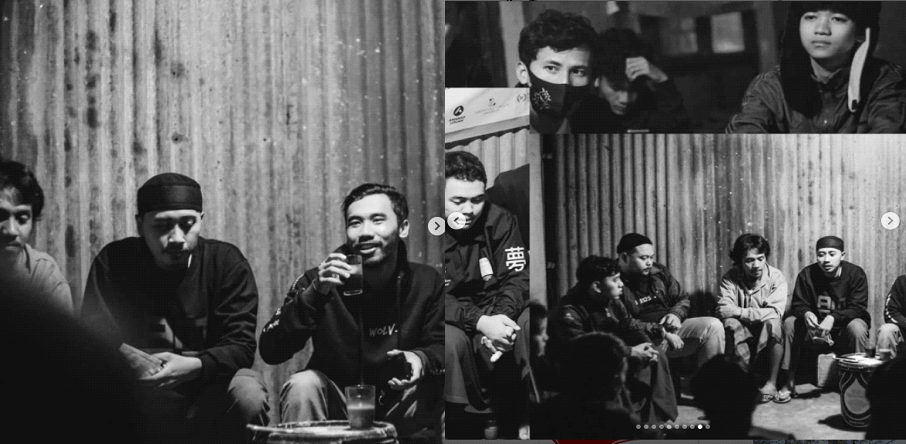Peningkatan Literasi Keagaamaan Kelompok Remaja Masjid Ihtimam sebagai Upaya Preventif Perilaku Intoleransi Beragama Increasing Religious Literacy of Youth Group of Ihtimam Mosque as a Preventive Effort for Religious Intolerance Behavior
Main Article Content
Abstract
Adolescents' participation in a religious community can influence the formation of patterns of social interaction in their environment. Ihtimam Mosque Community Youth (REKOMAS) is a youth religious organization that focuses on mosque activities for the community around the mosque's location. The existence of youth in the mosque community has had many positive impacts on the community, especially in providing facilities for social, educational, and religious activities. In the organizational process, they must gain new knowledge about religious literacy to strengthen the members' mentality. Therefore, this service activity is carried out to increase the capacity of youth religious literacy as a preventive effort to overcome intolerant behavior. Technically, implementing community service activities is carried out through informal sharing activities discussing various contextual problems experienced by most members. The selection of problem topics was chosen based on the closeness of the topic to the members and the interest of the topic for discussion through a social and religious perspective approach. Through this activity, it is hoped that it will be able to increase the capacity of religious literacy to overcome the behavior of religious intolerance in society.
Downloads
Article Details

This work is licensed under a Creative Commons Attribution-ShareAlike 4.0 International License.
Authors who publish with this journal agree to the following terms:
- Any article on the copyright is retained by the author(s).
- Author grant the journal, right of first publication with the work simultaneously licensed under a Creative Commons Attribution License that allows others to share work with acknowledgment of the work authors and initial publications in this journal.
- Authors are able to enter into a separate, additional contractual arrangements for non-exclusive distribution of published articles of work (eg, post-institutional repository) or publish it in a book, with acknowledgment of its initial publication in this journal.
- Authors are permitted and encouraged to post their work online (e.g., in institutional repositories or on their websites) prior to and during the submission process, as can lead to productive exchanges, as well as earlier and greater citation of published work.
- The article and any associated published material is distributed under the Creative Commons Attribution-ShareAlike 4.0 International License
References
Anggriany, N. (2006). Motif Sosial dan Kebermaknaan Hidup Remaja Pagaralam. Psikologika: Jurnal Pemikiran dan Penelitian Psikologi, 11(21), 51-63. https://doi.org/10.20885/psikologika.vol11.iss21.art5
Gallagher, E. V. (2009). Teaching for religious literacy. Teaching Theology and Religion, 12(3), 208–221. https://doi.org/10.1111/j.1467-9647.2009.00523.x
Gustiani, Y., & Ungsianik, T. (2016). Gambaran Fungsi Afektif Keluarga dan Perilaku Seksual Remaja. Jurnal Keperawatan Indonesia, 19(2), 85–91. https://doi.org/10.7454/jki.v19i2.459
Kusumastuti, H., & Hadjam, M. N. R. (2019). Dinamika Kontrol Sosial Keluarga dan Teman Sebaya pada Remaja Berisiko Penyalahgunaan NAPZA. Gadjah Mada Journal of Psychology (GamaJoP), 3(2), 70-85. https://doi.org/10.22146/gamajop.43439
Muqsith, M. A. (2019). Pemuda, Globalisasi dan Perubahan Sosial. 'Adalah : Jurnal Ilmu Hukum, 3(4), 19-25. https://doi.org/10.15408/adalah.v3i4.17925
Rulmuzu, F. (2021). Kenakalan Remaja dan Penanganannya. JISIP (Jurnal Ilmu Sosial Dan Pendidikan), 5(1), 364-373. https://doi.org/10.36312/jisip.v5i1.1727
Sumara, D., Humaedi, S., & Santoso, M. D. (2017). Kenalakan Remaja dan Penanganannya. Prosiding Penelitian dan Pengabdian kepada Masyarakat, 4(2), 129–389. https://doi.org/10.24198/jppm.v4i2.14393
Suradi, S. (2019). Karang Taruna, Agen Perubahan dan Pengembangan Masyarakat di Pandeglang. Sosio Konsepsia : Jurnal Penelitian dan Pengembangan Kesejahteraan Sosial, 8(3), 241–254. https://doi.org/10.33007/ska.v8i3.1676
Unayah, N., & Sabarisman, M. (2016). Fenomena Kenakalan Remaja dan Kriminalitas. Sosio Informa, 1(2), 121-140. https://doi.org/10.33007/inf.v1i2.142
ZA, I., Yunita, A., & Marwa, M. H. M. (2022). Penguatan Pemahaman Jama’ah Masjid Baiturrahman tentang Bahaya Riba dan Keutamaan Perekonomian Berbasis Syariah. PengabdianMu: Jurnal Ilmiah Pengabdian Kepada Masyarakat, 7(6), 847–859. https://doi.org/10.33084/pengabdianmu.v7i6.4036
